
Garden hoses keep your lawn and garden looking green and fresh. They also come in handy for cleaning windows and other outside areas. Finding the best garden hoses for your yard can be challenging. Use this guide to choose from different types of garden hoses, including soaker hoses, sprinkler hoses and expandable hoses. Compare vinyl vs. rubber hoses. Plus, learn about hose fittings, nozzles and garden hose maintenance.
How to Choose a Garden Hose
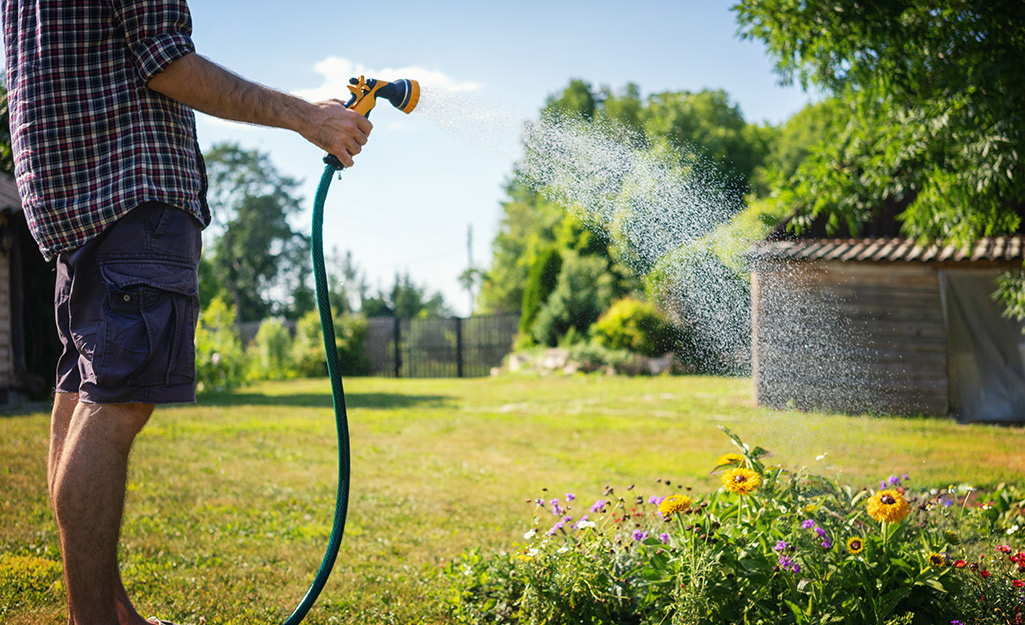
Choosing your best garden hose will depend on several factors such as the size of your yard, your local climate and budget. You’ll need to decide what garden hose material, durability and flexibility you prefer. The length, diameter and fittings you select will determine the hose’s capacity. Pick the nozzle or wand that best suits your needs. Overall, the best water hose will be the one that keeps your lawn, garden and landscape well-watered season after season.
Popular Water Hose Types
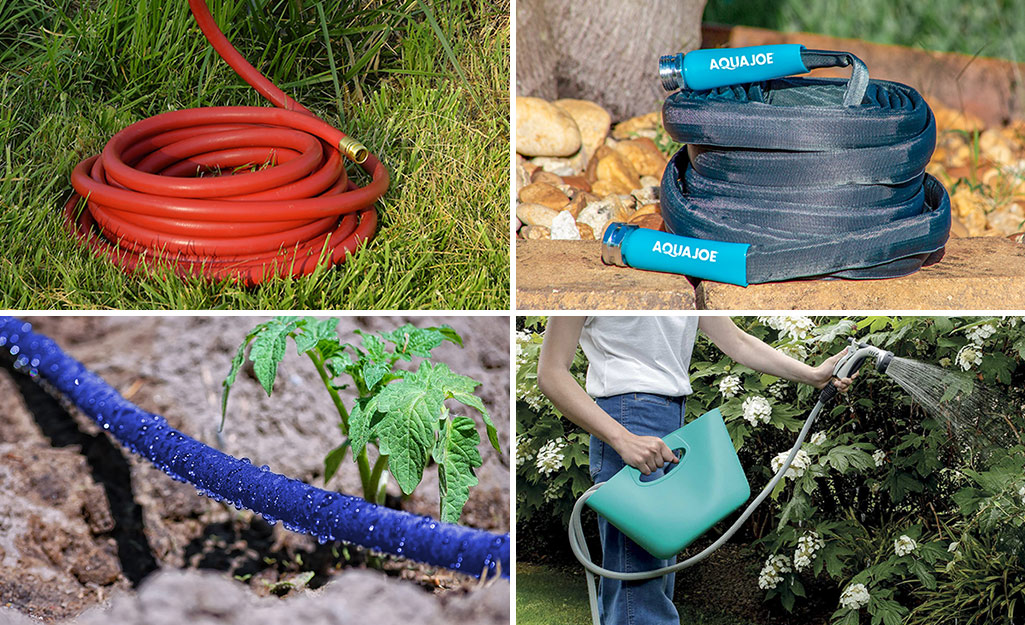
There are at least 10 types of garden hoses. The best garden hoses for watering the garden may not be the best water hose for soaking the lawn. Choose your hose based on the use. Here are the most popular types of garden hoses and uses:
- This is an all-purpose hose that works for general watering and cleaning tasks. You can get them in various materials and sizes.
- This hose has tiny holes in it that let water seep out slowly. The flow is gentle enough for delicate plants. If you set it on a timer, it’s an effortless way to keep your garden thriving through a hot summer.
- This hose acts as a sprinkler and a soaker hose. It has a flat base on the bottom and holes on top. Water sprinkles through the holes along the whole length of the hose. It’s excellent for watering a larger area of grass or garden.
- A flat hose looks like a collapsed fireman hose. It lies flat until water pressure makes it round. This hose is easy to store, takes up less space and is self-draining.
Coiled Hose:
- This hose is tightly coiled into a spring when it’s not in use. A coiled hose is great for watering small areas. It tends to be a light-duty hose.
Expandable Garden Hose:
- For a lightweight option, this scrunchy-looking hose expands up to three times its length when filled with water. Expandable hoses are the best water hoses for small yards and gardens.
- A marine hose features a nontoxic core, so you can drink water from it. It’s ideal for recreational vehicles (RVs), campers, trailers and boats.
Drinking Water Hose:
- Most standard hoses aren’t safe for drinking water. They have plasticizers that can leach into the water. Any hose marked as “drinking water safe” is lead-free, BPA-free and phthalate-free. Marine and RV hoses are drinking water safe.
- This type of hose is puncture- and kink-proof. It’s made of industrial stainless steel but is still lightweight. Metal hoses stay cool to the touch and are resistant to corrosion and UV rays.
Garden Hose Materials, Flexibility & Durability
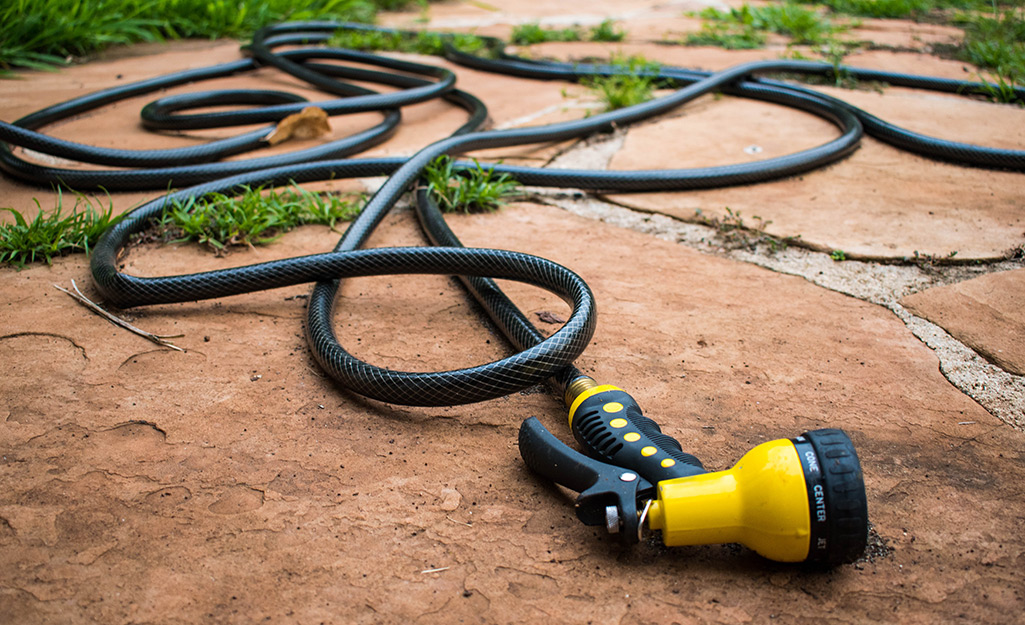
Hoses are usually made from vinyl, rubber or a combination of the two. Garden hoses are constructed in layers, or ply. The more ply the hose has, the more durable it is. Some hoses have metal coils or cords between the layers of rubber or vinyl to help keep the hose from kinking. Which garden hose material you choose will depend on your budget, flexibility needs and climate.
- Vinyl hoses are the most budget-friendly choice. These hoses are best for mild climates and lighter watering tasks. Vinyl hoses aren’t as durable as rubber hoses.
- A rubber garden hose requires the most upfront investment. They’re tougher, more flexible and heavier than vinyl hoses. Overall, rubber hoses are more durable.
- Combo hoses have rubber’s durability combined with vinyl’s light weight. They may have more ply or an outer mesh layer to protect against snags and punctures. Combo hoses are sometimes reinforced with nylon and rayon. This gives these hoses a different level of flexibility.
Aim for a garden hose that’s flexible enough for easy storage and going around corners. However, if the water hose is too flexible that it kinks easily.
- A reinforced rubber garden hose works well for home use.
- Stiffer hoses are less likely to kink while in use, but they can be heavy and cumbersome.
- Flexible hoses are easy to move around the garden, but they’re more likely to kink.
A hose's durability is determined by its category. Hoses are categorized ad light duty, standard or medium duty, heavy duty or super duty.
- Light-duty hoses aren’t as durable, but they’re easier to wind up and store than stronger duty hoses. They work well in small gardens.
- Standard hoses are good for most residential lawn and landscape needs. Take care of general gardening work with a medium-duty hose.
- Heavy-duty hoses have thick walls and are very sturdy. You can leave them outside and exposed to the elements without risking damage.
- The heavier duty the hose is, the more water pressure it can handle. Use heavy-duty hoses for pressure washer tasks.
Tip: When shopping for a hose, use the “U” test. Bend the hose into a “U” shape. If it kinks, choose another.
Best Garden Hose Length
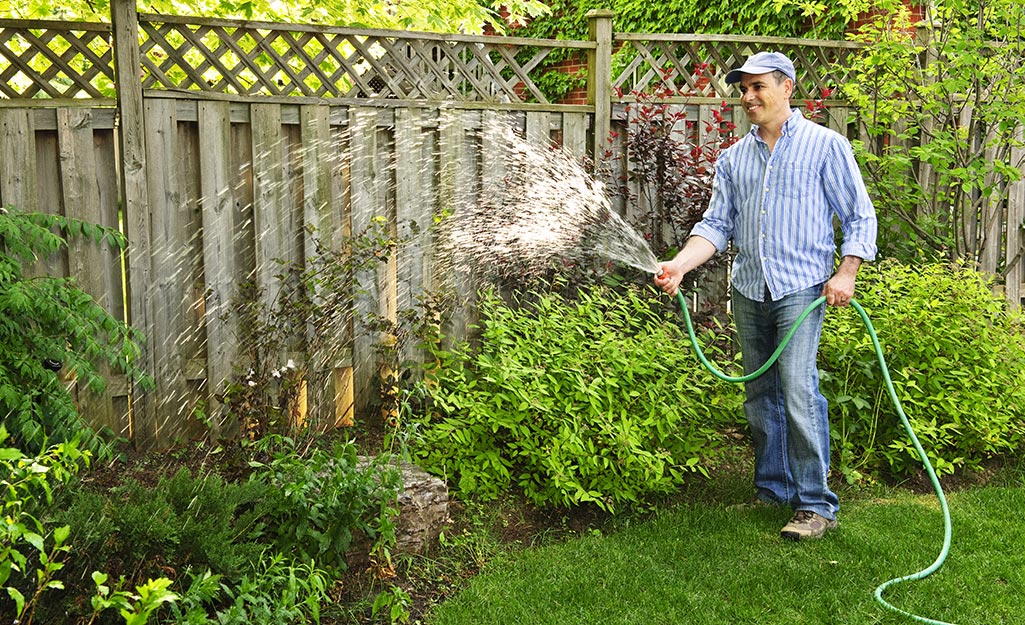
Hoses come in 25-foot increments up to 100 feet. The best length for a garden hose isn’t one that’s longest. The longer the hose, the harder it is to move it around your lawn. You’ll want a garden hose long enough to comfortably move around your yard without you constantly moving the hose. Here’s how to find right length garden hose:
- Mark the farthest distance in your yard.
- Using a tape measure, measure from that distance to the spigot or outdoor faucet you’ll attach your hose to.
- Choose a garden hose that is slightly longer than your measurement.
Water Hose Sizes and Fittings
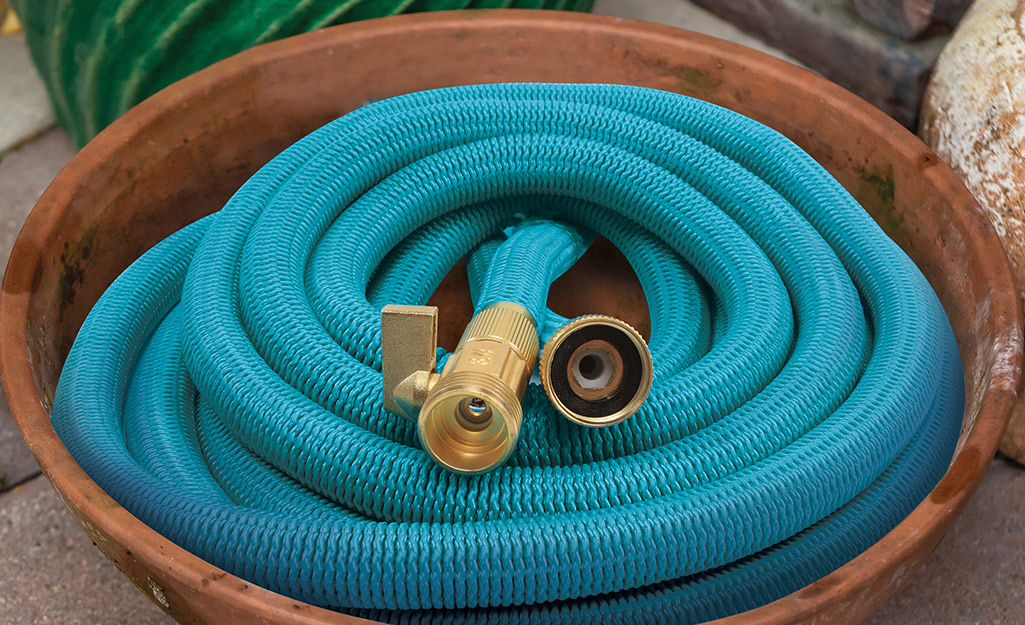
A garden hose’s size or diameter determines how much water flows through it at a time. Garden hose diameters generally range from 1/2 to 3/4 inches. Each size has its own use:
- A garden hose size of 1/2-inch in diameter works for most home lawn and garden uses.
- A few specialty hoses offer a 1-inch diameter, but length choices are limited.
- Larger diameter hoses are for heavy-duty watering tasks. Commercial landscapers are more likely to use lengthy 3/4-inch diameter hoses than homeowners.
Once you've chosen the size of your hose, choose the fittings. Hose fittings, or couplings, are where the hose attaches to the water supply. They’re the end pieces that attach to spigots, sprinklers and nozzles. Most hose fittings are metal and plastic.
- Metal fittings, usually brass, are more durable than plastic. They also come in zinc and aluminum. They can be
- Plastic fittings may be made of nylon or thermoplastic. They attach easier than metal ones.
Next, select a fitting:
- Octagon female fittings are easier to work with than standard round fittings.
- Hose connectors, or spigot adapters, make it easy to multitask. You can run several hoses at the same time from one spigot. Hose connectors allow you to water a large lawn or a wide flower garden in a fraction of the time.
Garden Hose Nozzles
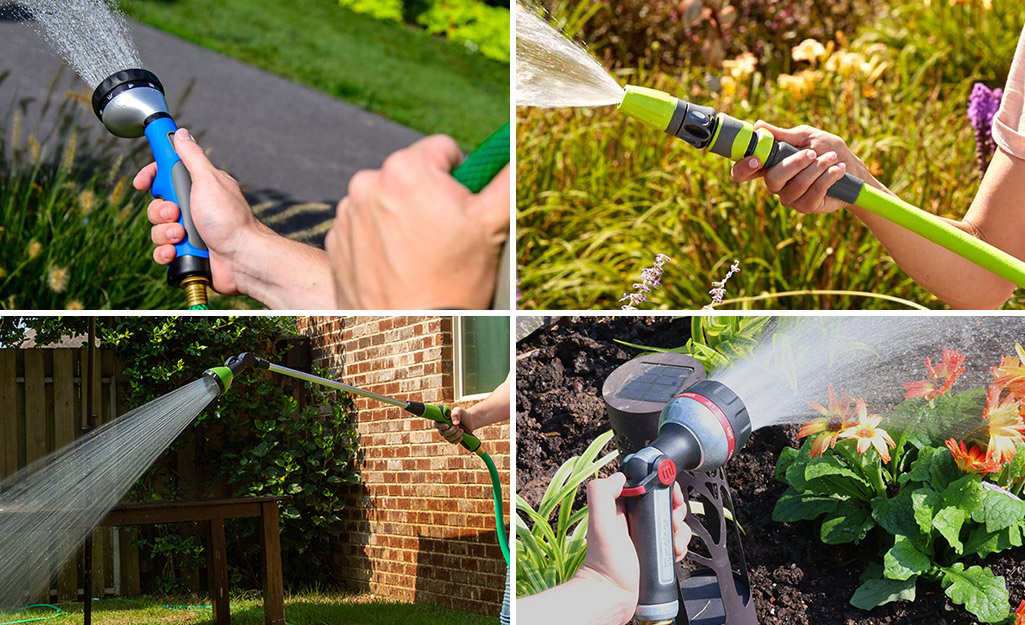
Your specific watering needs will determine the best garden hose nozzles and wands to use.
- Pistol grip nozzles feature pull-style handles that allow you to change the pressure and style of spray as you squeeze. They're sometimes called spray gun nozzles.
- Watering wand nozzles extend your reach by up to 30 inches. They're great for watering areas that are tough to reach.
- Fan nozzles feature widened mouths that spray a wide, gentle spray of water. They're perfect for gently watering delicate foliage.
- Fireman nozzles are versatile and can put out a large amount of water in a very short time. They quickly take care of big watering jobs.
- Pattern nozzles are pistol grip nozzles or wands with many different spray settings. Choose from up to 10 spray patterns, ranging from a fine mist to a strong jet.
Garden Hose Maintenance
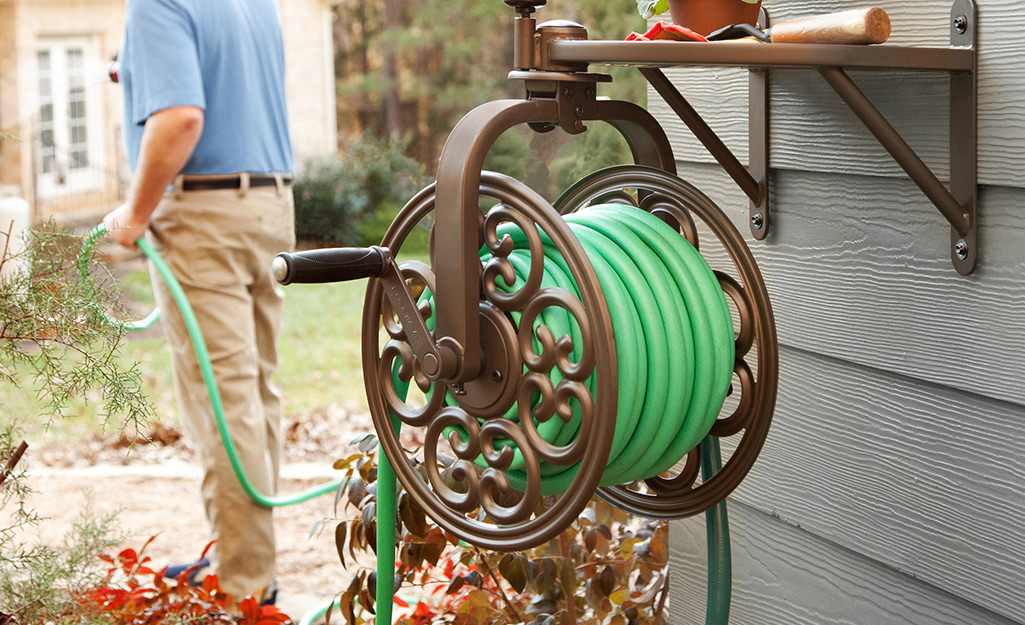
Quality garden hoses require an upfront investment. Protect that investment with regular maintenance. A garden hose will also last longer if you’re willing to make small repairs.
- Lengthen the life of your hose by draining it after each use. Turn off the water at the spigot. Hold the nozzle trigger until the water stops, releasing the rest of the water pressure. Disconnect the hose from the spigot and let the water drain out.
- Kinks in hoses can cause wall damage leading to tears or holes in your garden hose. Look for kinking as you coil or uncoil your hose, then unkink it as you go.
- Store your garden hose on a reel when it’s not in use. Simple hose hangers or a garden hose reel will keep your hose neat. It also means the hose isn’t a tripping hazard. This adds years to the life of your garden hose.
- Make your hose last by storing it in a garage, basement or shed during the winter. Hoses contract and expand with cold and heat, which can damage your hose.
- Spray a silicone lubricant on hose nozzles and wands to prevent rust and locking.
- Even the best-kept hose will get pinholes. These holes can be easily repaired with rubber patch kits. Leaky couplings can be replaced as well.
Now you know how to choose the best garden hose material, length, fittings and nozzles for your needs. The best water hoses will always be the ones that can handle your most common watering needs. For example, keep your lawn lush with a soaking hose or sprinkler hose. Use a coiled hose for your patio garden. Make sure to use a misting nozzle on delicate plants or flowers.
Once you’ve found the best water hose for your lawn or garden, get it sent right to your door. The Home Depot delivers online orders when and where you need them.

































